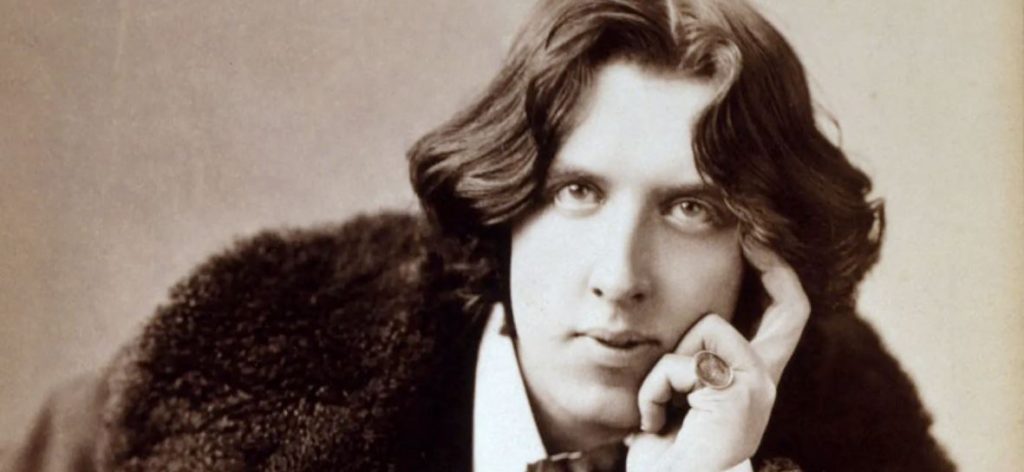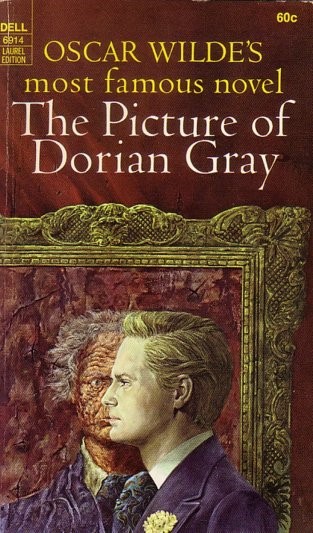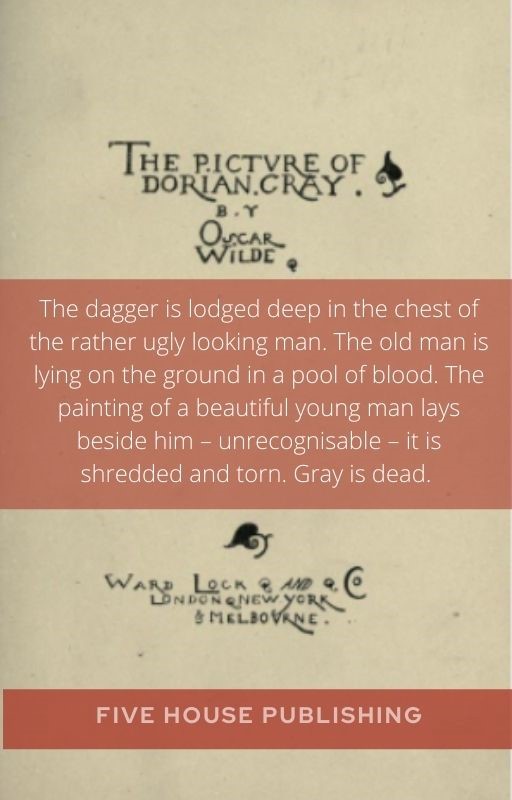$0.00
Product detail: 11 pages including several images. 1700 words.
Introduction:
The dagger is lodged deep in the chest of the rather ugly looking man. The older man is lying on the ground in a pool of blood. The painting of a beautiful young man lays beside him – almost unrecognisable – it is slashed and torn. Gray is dead.
The readers of the novella Dorian Gray are stunned at the end of the story. An unexpected swap takes place. Gray’s beautiful physical appearance changes instantly – the interior of his soul is displayed on the canvas. Unbelievable! The man’s true character is suddenly revealed in the once young and vibrant image of the man in the painting. Dorian slashes the canvas with the same knife he is about to kill himself with — an excellent concept by the writer. By stabbing the portrait, Dorian inadvertently kills himself. The authentic old Dorian – his character – is displayed at the end. The image changes from the inside out.
Read the full article as a blog post:
https://fivehousepublishing.com/2021/09/17/unparalleled-find-a-badge-a-skull-and-a-2000-year-old-coin/
Description
Excerpt:
How could such a tragedy happen?
Dorian sold his soul to the Devil, just like Faustus. I am referring to the play ‘Dr Faustus’ created by Shakespeare. In the end, the Devil took the energy of Faustus, which he owned. Doctor Faustus ends with the title character being savagely ripped to pieces by evil devils before his soul is dragged down to Hell, where it will spend eternity in the company of Lucifer and all his vicious acolytes. Dr Faustus’ inner man was corrupted – sold out to the greatness of this world. His physical appearance and behaviour were impressive. Intelligent and very smart. Sadly, his inner man was corrupted.
Comparing and contrasting Lady Macbeth and Dr Faustus – plays by the famous Shakespeare.
You cannot play with sin and the Devil – is the main message in both these stories: Dr Faustus and Dorian Gray. Similarly, in Shakespeare’s second story, Lady Macbeth (Shakespeare’s Tragedy of Macbeth) can’t get the blood off her hands. She washes and washes, but alas, to no avail. The imaginary bloodstains on her hands won’t come off. After stabbing the reigning king to death — so her husband could become king — she washes and washes her hand. It represents Pontius Pilate washing his hands in innocence after handing the innocent Jesus to the people to be crucified. The imaginary stains on Lady Macbeth’s hands were permanent. Not of the outside, but her sin was on the inside. Her heart and soul were sold to the Devil. Her imaginary blood-stained hands — her soul — can’t be cleansed. Outwards, she stays beautiful. But, something happened on the inside. Her soul suffered.
Oscar Wilde’s novella was not well received back then. First published in July 1890 in the American periodical Lippincott’s Monthly Magazine, it stirred up controversy. It was condemned: Too much experimenting and indulging in unforgivable sins (drugs, sex, and more).
A second comparison: Famous French Novel – Le Miserable. The protagonist – Juan Valjean – has no beauty on the inside and no beauty on the outside.
Valjean – arrested for stealing bread – spent many years in jail. The marks of harsh prison life were etched on his face and body. His heart was filled with hatred. Later, Valjean escaped from prison. He went to a church to find food and refuge. He found a forgiving priest that called him brother. The priest ‘bought’ his soul. Valjean stole the candelabra from the church and fled. The police arrested him with the silverware several hours later. He was taken back to the church. The priest gave him the rest of the silverware in the church while the police officers were present. Jean is stunned by the actions of the priest. The additional silverware – and the acknowledgement of the priest that he gave it to Valjean as a gift – redeemed Jean.
The police believed the priest; Valjean was free to leave with all the silverware; He left the church and started a new life. He became a very wealthy businessman by serving the community – he becomes Monsieur Madeleine. Beautiful on the inside and the outside – a true gentleman. In this story, Valjean was ungroomed and rough – a dirty prisoner. His inner-person was filled with hatred.
To sum up, unsightly on the outside and rotten on the inside. Then his soul is redeemed by God. This story is different from Dorian Gray (beautiful on the outside and awful on the inside). Valjean’s transformation – ignited by love and forgiveness – starts from the inside out. Forgiveness flows: He is redeemed by the priest. He repents; he is remorseful – the Blood of Christ cleansed him from all unrighteousness. He is blessed, and his fortunes changed. Moral of the Le Miserable story: Real beauty starts from the inside out.

Oscar Fingal O’Flahertie Wills Wilde (16 October 1854 – 30 November 1900) was an Irish poet and playwright. Credit: By Napoleon Sarony – Library of Congress, Public Domain, https://commons.wikimedia.org/w/index.php?curid=9816614






